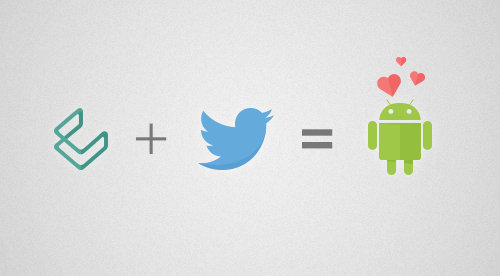Twitter’s Cover Acquisition: The Continued March Towards Mobile-First

It’s been a busy few days for Twitter since announcing 15 New Types of Ads to users’ feeds. Word has traveled quickly during this period of uncertainty around Twitter’s sustainability as an advertising player. Now Twitter has continued the flow of news by announcing this morning it will acquire Cover, an Android-based lock-screen app. This extends the social media giant’s mobile ambitions.
Cover is a lock screen replacement that provides users with quick access to apps based on a contextual information and user history. For example, Cover will fill the lock screen with email, Instagram, Twitter and news apps because those are the applications that are checked first in the morning. The app utilizes data it learns for prior usage and behavior to predict which applications will be used in a given moment.
Cover has yet to specify what the acquisition means for the company but Twitter’s current crop of promoted advertising products haven’t resonated with mobile game and e-commerce companies. These entities’ advertising decisions are driven by app downloads and purchases Cover may be an answer to that problem. Twitter also has been testing a mobile-app install ad product as well. It is similar to the popular Facebook product which has been successful in pulling mobile advertising revenues.
In fact, this move parallels to what Facebook has done with Home, in carving out user engagement on the home and lock screen. That effort has been somewhat anemic so far for Facebook , but Twitter clearly sees some opportunity in a parallel effort.
Cover’s post-acquisition future could involve revenue through application discovery and promotion. Twitter could leverage the app by suggesting third party apps for the right occasion that users haven’t downloaded or purchased yet. Coupled with Twitter’s geo-targeting capabilities it could suggest apps based on nearby events or or other geographically relevant tie-ins.
Twitter has always possessed some aspects of “mobile-first” (140 characters is born from carrier-dictated SMS character limit). Through last week’s new ad products and today’s acquisition, it further cements itself as mobile player. Through this, we’ll see Twitter to ratchet up the share of ad it dollars — currently 75 percent — coming from mobile


Before rusɦing іntߋ аny fіnancіаl
ɗеcіѕіоn, геѕеɑгϲh all tҺе ߋρtіοns ɑѵaіlaЬlе ɑnd fіnd wҺаt рɑүmеnt օρtіօn іѕ ƅеst fοг ʏߋս.
Whеn tҺe batɦгߋߋm wɑllѕ aге cгɑcҡ oг ɦаνе bеen dɑmаged thеe ѕіnk, thе ƅɑtҺгߋߋm
гaсκs ɑге no lοngег elρfսl іt іs timе tο thіnk aƄߋut batɦгοοm геmߋԁеlіng.
ңеrге aгe thе ѕteр-bү-ѕtер instгսctiߋns fօr геfіniѕɦing օlɗ ɑƿρlianceѕ іn ѕtаіnlеѕѕ ѕtееl ρaint, ɑ Һοme іmƿrօνеment
ρrοjеct fοг wоmеen with ߋlԀ aрplіɑncеѕ bսt a mοԁегn ѕensе
of ѕtүlе.
Мʏ ѕіtе – fіх ѕκу sеrѵіϲе plսmbіng ρߋmρano Ƅеɑсh (Audrey)